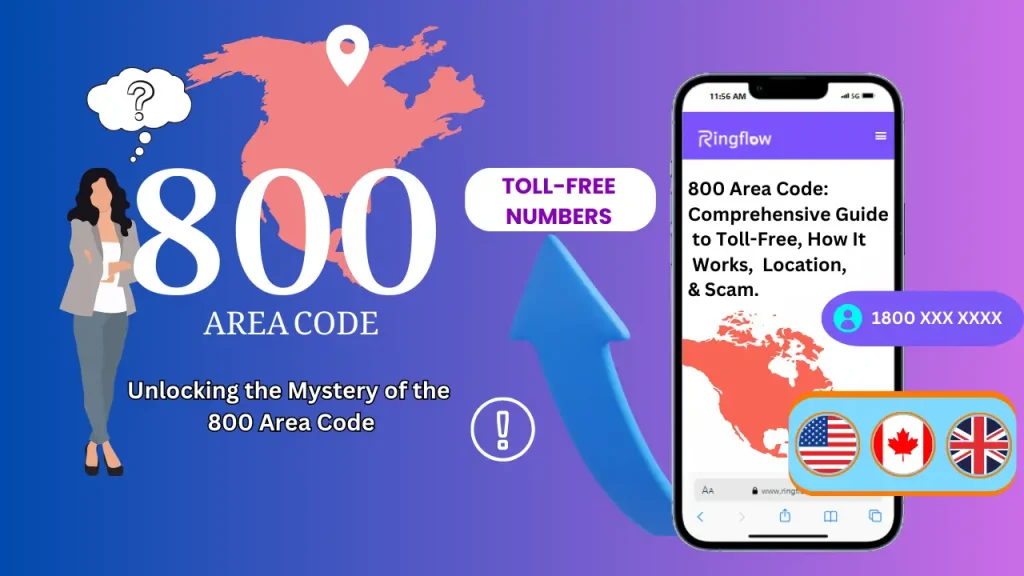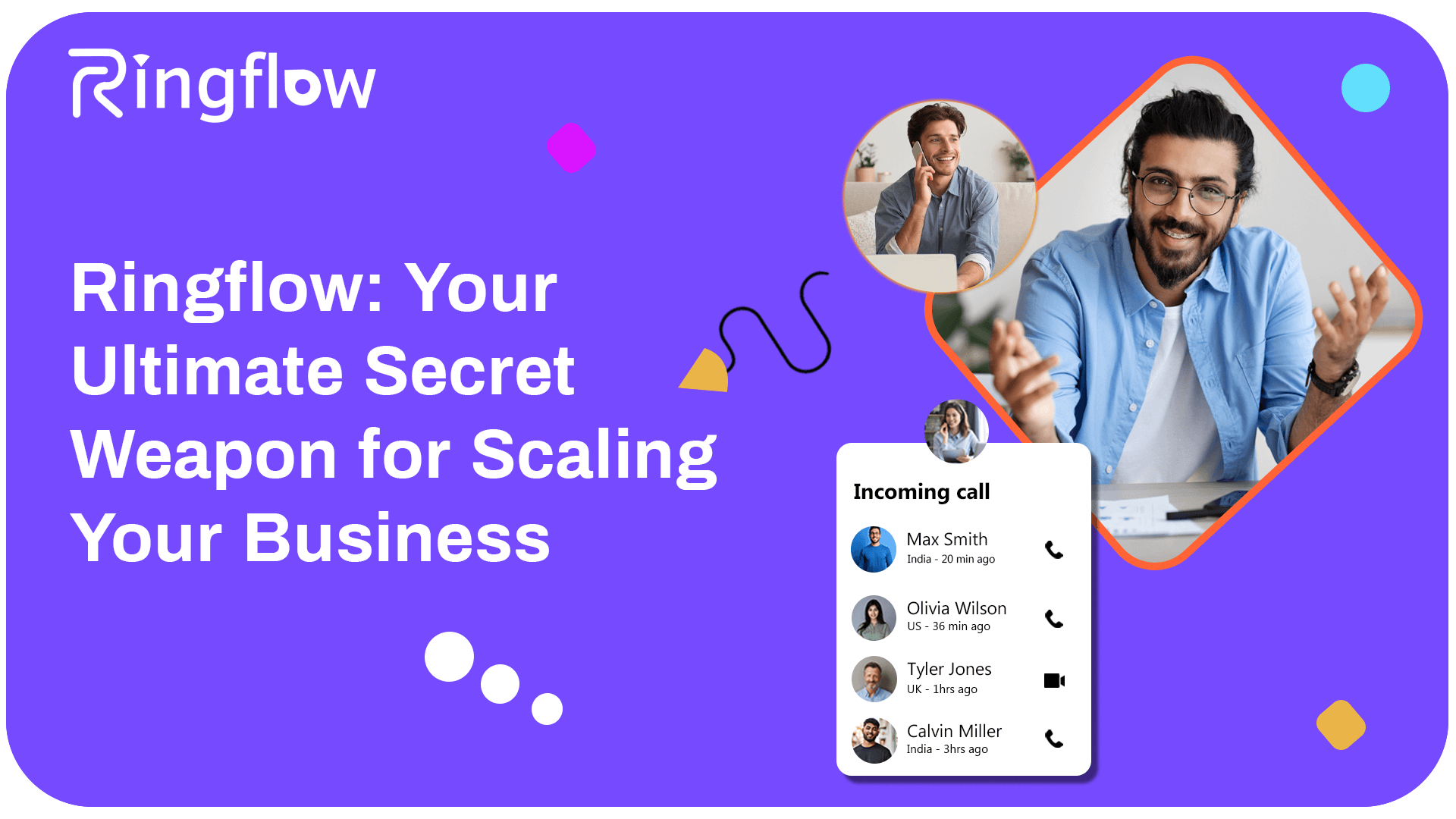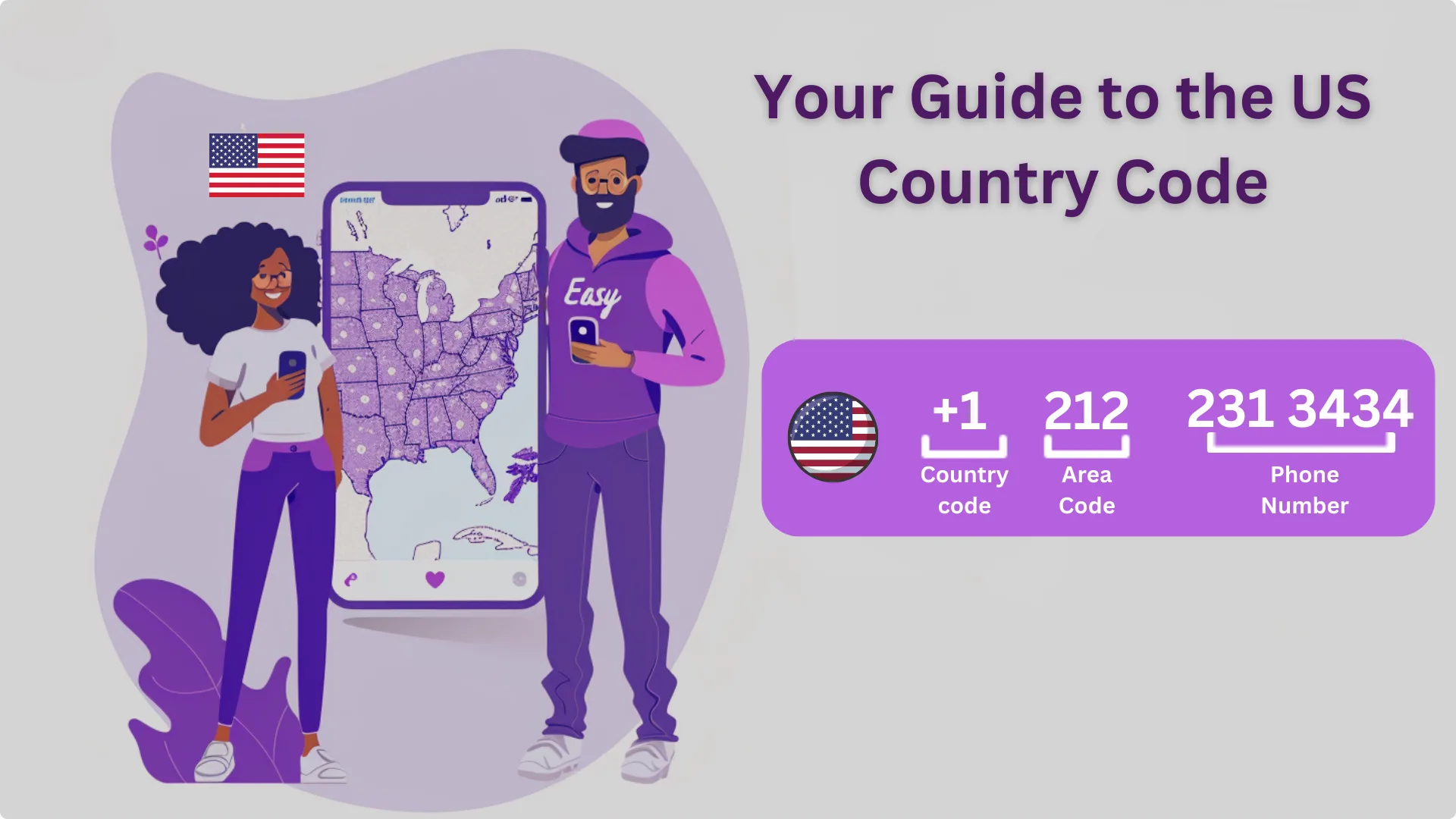Introduction
The iconic 800 area code has become synonymous with toll-free calling, providing businesses with a powerful tool to enhance customer service, support, and overall communication. Since its introduction by AT&T in 1966, the 800 prefix has revolutionized how companies interact with their customers, offering a convenient and cost-free way to facilitate inquiries, sales, and support. Today, 800 area code numbers remain widely available and highly sought after by organizations of all sizes across various industries. These virtual numbers, not tied to any specific geographic location, can be routed to any desired destination within the North American Numbering Plan (NANP), allowing businesses to project a nationwide or even NANP-wide presence. As you explore the world of 800 numbers in this comprehensive guide, you’ll gain valuable insights into their history, functionality, benefits, and best practices for implementation and integration into your business’s communication strategy.What is an 800 Area Code?
The 800 area code is a toll-free telephone prefix within the North American Numbering Plan (NANP), allowing callers to reach businesses and individuals without being charged for the call. Introduced by AT&T in 1966, it revolutionized the way businesses interacted with customers, offering a convenient and cost-free way to communicate. Since then, it has become a widely recognized business tool, used for customer support, sales inquiries, and other important functions. Its popularity led to the introduction of additional toll-free prefixes like 888, 877, 866, 855, and 844. Operating within the NANP, which covers the United States, Canada, and several Caribbean nations, 800 numbers are virtual and not tied to any specific geographic location. They can be routed to any desired destination, such as a call center or a business’s main office, making them an essential part of modern business communication and customer service practices.
What Is the Location of Area Code 800?
The 800 area code is a toll-free prefix not associated with any specific geographic location. As a virtual number, it can be routed to any phone number or call center within the North American Numbering Plan (NANP) area, which includes the United States, Canada, and several Caribbean countries. The virtual nature of toll-free numbers allows businesses to maintain a national presence without being tied to a specific location. For example, a company based in New York can utilize a virtual number routed to its call center in Texas, giving customers a nationwide impression. While the area code itself is not linked to a specific location, the destination phone number associated with it can be traced to a physical location. However, this information is typically only available to the telecommunications provider and not readily accessible to the public. It is a virtual prefix used for toll-free telephone numbers within the NANP, allowing businesses to establish a national presence and route calls to their desired destination, regardless of the caller or business’s physical location.Which Country Provides the 800 Area Code?
The area code 800, along with other toll-free prefixes, is not tied to a single country but is part of the North American Numbering Plan (NANP). The NANP is a telephone numbering plan that encompasses multiple countries and territories, allowing organizations within these regions to utilize toll-free prefixes.
The countries and territories covered by the NANP include:
- United States and its territories (American Samoa, Guam, Northern Mariana Islands, Puerto Rico, and the U.S. Virgin Islands)
- Canada
- Bermuda
- Anguilla
- Antigua and Barbuda
- Bahamas
- Barbados
- British Virgin Islands
- Cayman Islands
- Dominica
- Dominican Republic
- Grenada
- Jamaica
- Montserrat
- Saint Kitts and Nevis
- Saint Lucia
- Saint Vincent and the Grenadines
- Sint Maarten
- Trinidad and Tobago
- Turks and Caicos Islands
How Does an 800 Area Code Number Work?
It works differently than standard landline or mobile phone numbers, mainly in how the cost of the call is handled and how the call is routed through the telephone network. Call Routing for Toll-Free Numbers: When a person dials a number with a specific toll-free prefix, the call is transmitted through the Public Switched Telephone Network (PSTN) to the intended destination specified by the company that possesses the number. The PSTN is the traditional telephone network that consists of switches, trunks, and other infrastructure necessary for routing calls between different locations. The service provider, known as a Responsible Organization (RespOrg), manages the routing process by maintaining a database that links these toll-free numbers with their corresponding destination phone numbers. RespOrgs are authorized entities that manage and distribute toll-free numbers on behalf of their clients, following FCC rules and guidelines to ensure fair allocation and prevent number hoarding. Cost Allocation: For calls made to numbers with this unique toll-free prefix, the expense is covered by the organization receiving the call rather than the individual making it. This allows callers to reach out from any phone within the North American Numbering Plan (NANP) without incurring charges. The company compensates the RespOrg based on factors such as call duration, volume, and additional features utilized. Comparison to Regular Phone Calls: When dialing a standard landline or mobile number, the caller usually bears the cost of the call, which is determined by the duration, distance between parties, and their phone plan. Regular phone numbers are tied to specific geographic locations, whereas toll-free numbers with this distinctive prefix can be directed to any destination within the NANP. A Toll-Free Number routes calls through the PSTN to a designated destination determined by the owning organization, with the cost borne by the organization rather than the caller. The routing process is managed by RespOrgs, who maintain databases linking the toll-free numbers to their corresponding destination phone numbers.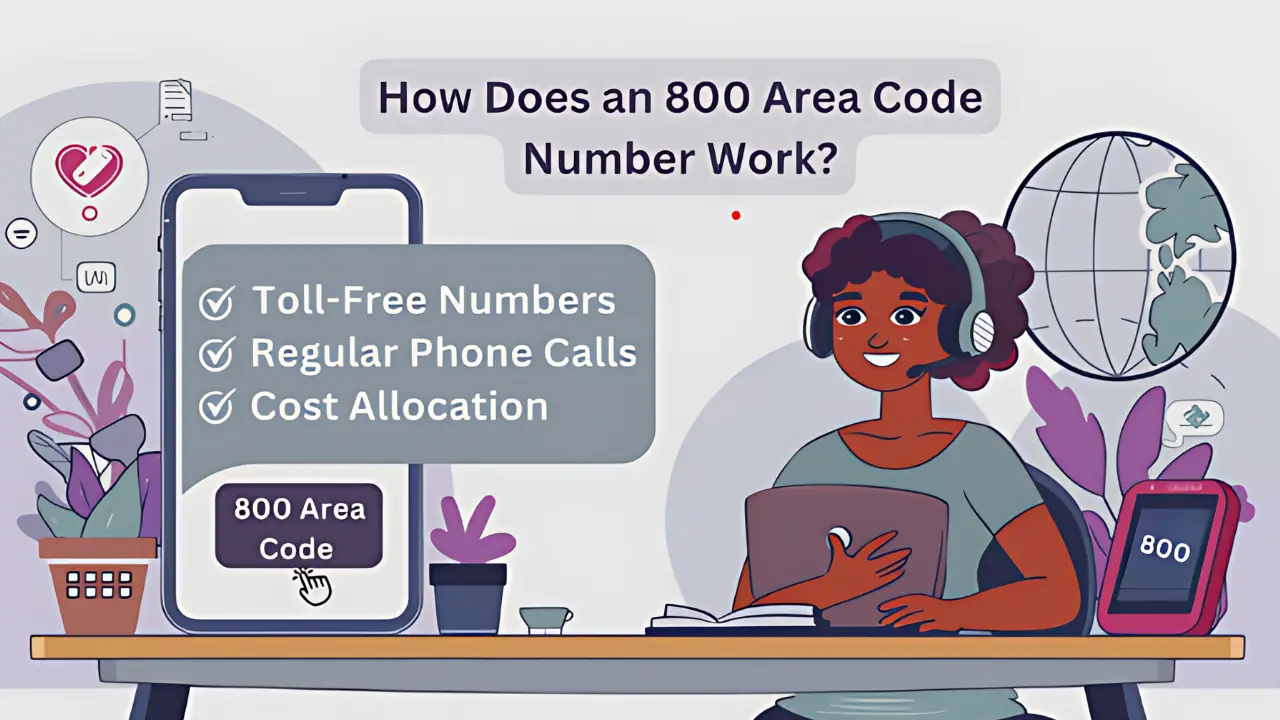
Who Is Using 800 Area Code Numbers?
These are widely used by businesses and organizations of all sizes across various industries. They offer a convenient and cost-free way for customers to reach out, making them essential for customer service, sales, and support.Common business types benefiting from 800 numbers include:
- Customer Support: Technology companies, financial institutions, and e-commerce platforms use virtual numbers with distinctive prefixes for customer support hotlines.
- Sales Hotlines: Businesses relying on telemarketing or direct sales often use these virtual numbers as primary sales channels.
- E-Commerce: Online retailers provide virtual numbers for customer inquiries, order placements, and post-sales support.
- Service Industries: Insurance companies, healthcare providers, and legal firms frequently use these numbers for easy client access.
- Travel and Hospitality: Hotels, airlines, and travel agencies use virtual numbers for reservations, modifications, and customer support.
Benefits of an 800 Area Code
Implementing virtual numbers with distinctive prefixes can offer several significant advantages for businesses, enhancing their professional image, customer service, and overall customer experience. Let’s explore some of the key benefits of using these numbers: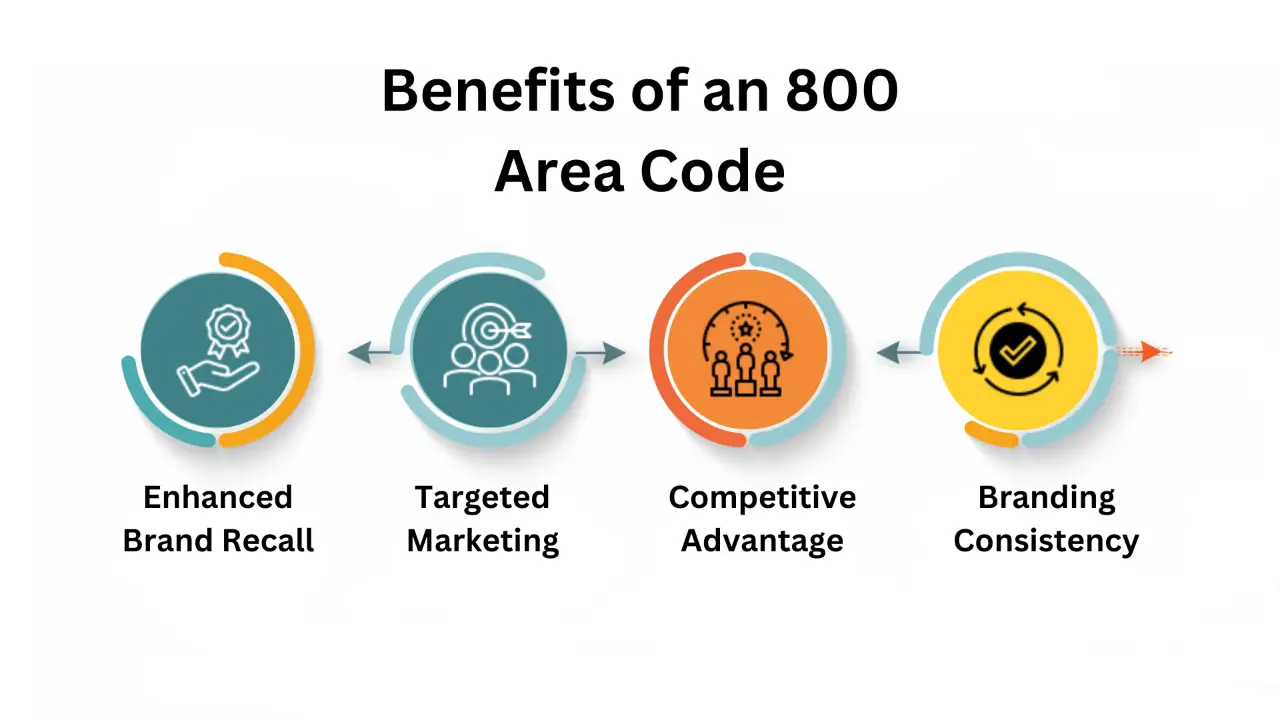
Key benefits include:
- Increased Credibility: It helps businesses project a professional and established image, suggesting a nationwide or NANP-wide presence.
- Improved Customer Service: By removing long-distance charges, these virtual numbers encourage customers to reach out more frequently, leading to increased satisfaction and higher conversion rates.
- Memorable and Easy to Dial: These are easy to remember and dial, thanks to their simple and standardized prefix, making them beneficial for businesses relying on customer recall.
- Cost-Effective for Businesses: While businesses bear the cost of incoming calls, the benefits often outweigh the expenses, as these numbers can attract more customers, increase sales, and boost retention.
How an 800 Area Code Number Can Help Your Business
These numbers can be a powerful tool for businesses looking to streamline operations, improve customer service, and drive growth. By implementing a toll free number, companies can take advantage of several real-world benefits.Real-World Use Cases:
- Streamlined Order Taking: Virtual numbers simplify the ordering process, encouraging more sales by eliminating long-distance charges.
- Enhanced Support Accessibility: These distinctive numbers make it easier for customers to reach out with questions or concerns, leading to faster problem resolution and increased satisfaction.
- Improved Sales Inquiries: Virtual numbers encourage potential customers to inquire about products or services without hesitation, increasing the volume of inquiries and sales opportunities.
- Consolidated Contact Points: For businesses with multiple locations or departments, these numbers serve as a centralized point of contact, streamlining communication and customer interactions.
Contributing to Business Growth:
- Enhancing customer service and support increases satisfaction and loyalty, leading to higher retention rates and referrals.
- Toll-free numbers help businesses expand their reach and tap into new markets by providing a cost-free way for customers to get in touch.
- Numbers with distinctive prefixes contribute to a business’s branding and professional image, helping them stand out from competitors and build trust with potential clients.
Are 800 Area Code Numbers Still Available?
Yes, toll free area code numbers are still widely available for businesses and organizations. The North American Numbering Plan Administrator (NANPA) and the Federal Communications Commission (FCC) work together to ensure an adequate supply of 800 numbers through number recycling and efficient management by Responsible Organizations (RespOrgs). RespOrgs are authorized entities that manage and distribute numbers with distinctive prefixes on behalf of their clients. They follow FCC rules and guidelines to ensure fair allocation and prevent number hoarding. When a business needs a toll-free number, they typically work with a Responsible Organization (RespOrg), which helps them search for, reserve, and configure the desired virtual number. The ongoing availability of these numbers is maintained through this process, making toll-free calling a popular choice for companies seeking to enhance customer service and support. RespOrgs follow FCC rules and guidelines to ensure fair allocation and prevent number hoarding, ensuring a sufficient supply of toll-free numbers for businesses.How to Get an 800 Area Code Number?
Getting an 800 toll free area code number is a straightforward process that involves working with a toll-free service provider or a Responsible Organization (RespOrg). By following a few simple steps, businesses and organizations can easily acquire and implement an 800 number to enhance customer service and support.General Overview of the Process:
- Choose a service provider or Responsible Organization (RespOrg) that offers numbers with distinctive prefixes.
- Search for available numbers through the provider’s tools, considering memorable patterns or vanity numbers if desired.
- Select and reserve your preferred number with the provider.
- Configure the number’s routing, call forwarding, and any other features needed.
- Once configured, the provider will activate your new number for use.
- Update your marketing materials and channels with the new number.
800 Area Code vs Other Toll-Free Area Codes: Is There Any Difference?
It is the most well-known toll-free prefix, there are several other toll-free area codes available, including 888, 877, 866, 855, and 844. These additional prefixes were introduced to meet the growing demand for toll-free numbers and to ensure an adequate supply for businesses and organizations.Other Toll-Free Prefixes:
- 888: Introduced in 1996, the 888 prefix was the first toll-free area code added after 800. It has gained popularity among businesses and is often used as an alternative when an 800 number is unavailable.
- 877: The 877 prefix was introduced in 1998 and has become a common choice for businesses looking to differentiate themselves from competitors using 800 or 888 numbers.
- 866: Introduced in 2000, the 866 prefix offers another option for businesses seeking a unique toll-free number.
- 855: The 855 prefix was added in 2010 to further expand the pool of available toll-free numbers.
- 844: Introduced in 2013, the 844 prefix is the newest addition to the toll-free area code family.
- 833: Introduced in 2017, the 833 prefix is the latest addition to the toll-free area code family.
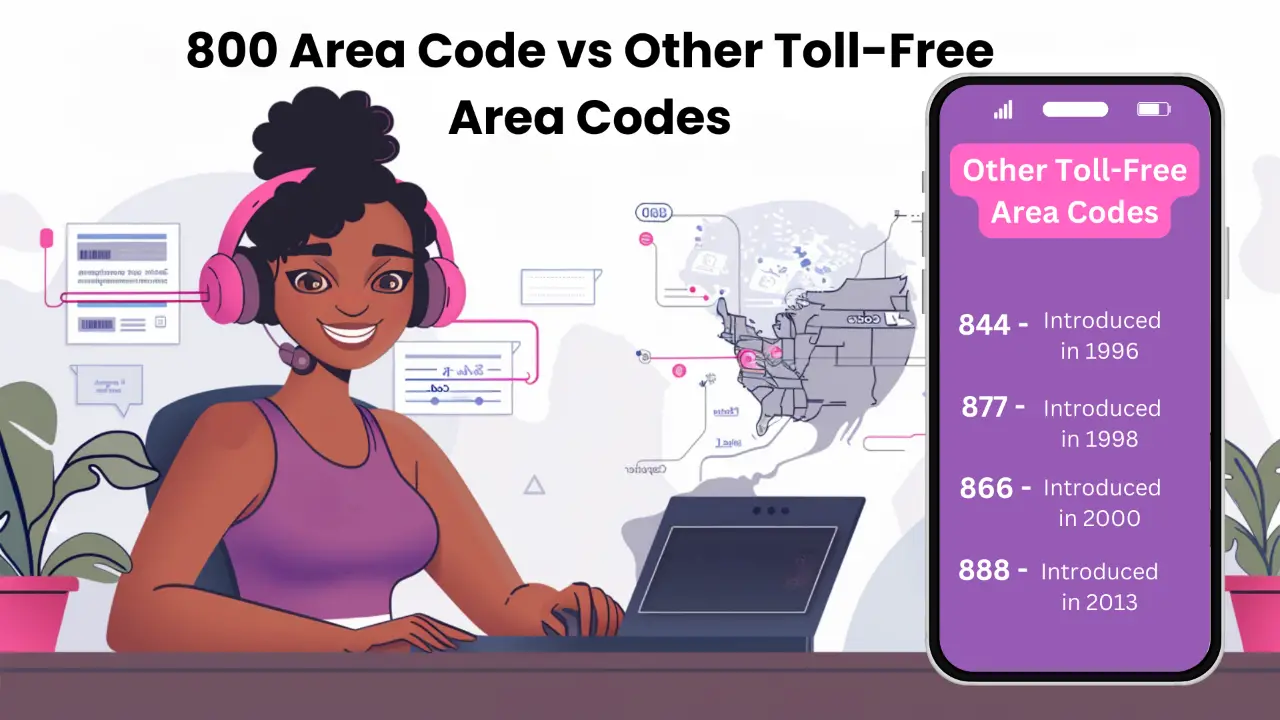 Functional Similarity: Despite the different prefixes, all toll-free area codes, including 800, function the same way. They allow callers to reach businesses or organizations without incurring any charges, as the cost of the call is borne by the called party. From a technical standpoint, there is no difference in how these numbers operate or how they are managed by Responsible Organizations (RespOrgs). Perception and Branding: While toll-free area codes are functionally identical, there may be some differences in perception and branding. The 800 prefix, being the oldest and most recognizable, is often associated with established, trustworthy businesses. Some companies may prefer an 800 number for its traditional appeal and widespread recognition. As more businesses adopt toll-free calling, the other prefixes have become increasingly common and accepted. In many cases, the choice of prefix may come down to availability, personal preference, or a desire to differentiate from competitors. Ultimately, the most important factor is that the number is memorable, easy to dial, and effectively serves the business’s needs for customer service and support. While there are several toll-free area codes beyond 800, including 888, 877, 866, 855, and 844, they all function the same way. The different prefixes exist to ensure an adequate supply of numbers and offer businesses more options for their toll-free calling needs. Although the 800 prefix may have a slight advantage in terms of recognition and tradition, all toll-free area codes can effectively serve businesses and their customers.
Functional Similarity: Despite the different prefixes, all toll-free area codes, including 800, function the same way. They allow callers to reach businesses or organizations without incurring any charges, as the cost of the call is borne by the called party. From a technical standpoint, there is no difference in how these numbers operate or how they are managed by Responsible Organizations (RespOrgs). Perception and Branding: While toll-free area codes are functionally identical, there may be some differences in perception and branding. The 800 prefix, being the oldest and most recognizable, is often associated with established, trustworthy businesses. Some companies may prefer an 800 number for its traditional appeal and widespread recognition. As more businesses adopt toll-free calling, the other prefixes have become increasingly common and accepted. In many cases, the choice of prefix may come down to availability, personal preference, or a desire to differentiate from competitors. Ultimately, the most important factor is that the number is memorable, easy to dial, and effectively serves the business’s needs for customer service and support. While there are several toll-free area codes beyond 800, including 888, 877, 866, 855, and 844, they all function the same way. The different prefixes exist to ensure an adequate supply of numbers and offer businesses more options for their toll-free calling needs. Although the 800 prefix may have a slight advantage in terms of recognition and tradition, all toll-free area codes can effectively serve businesses and their customers. Vanity Numbers
In the world of toll-free calling, vanity numbers have emerged as a powerful tool for businesses looking to enhance their branding, marketing, and customer engagement efforts. By combining the benefits of toll-free calling with memorable word combinations or sequences, vanity numbers offer a unique way for companies to stand out and connect with their target audience.What are Vanity Numbers?
Vanity numbers are toll-free numbers that use a memorable word combination or sequence instead of a standard numeric format. These numbers often spell out a relevant word, phrase, or business name, making them easier for customers to remember and associate with a particular brand or service. For example, a pizza delivery service might use a vanity number like 1-800-PIZZA-NOW, while a legal firm might opt for 1-800-LAWYER. Vanity numbers can be based on the actual digits of the phone number (e.g., 1-800-529-9377 could be translated to 1-800-LAWYERS) or use a combination of words and numbers that are memorable and relevant to the business.Benefits of Vanity Numbers:
- Enhanced Brand Recall: One of the primary advantages of vanity numbers is their ability to improve brand recall. By using a memorable word or phrase, businesses can create a stronger association between their brand and their contact information. Customers are more likely to remember a vanity number like 1-800-FLOWERS than a generic numeric toll-free number, making it easier for them to reach out when they need the company’s products or services.
- Targeted Marketing: Vanity numbers can also be used as a targeted marketing tool. By choosing a word or phrase that closely relates to their business or industry, companies can attract customers who are specifically looking for their products or services. For instance, a home cleaning service using the vanity number 1-800-CLEANUP is likely to attract customers searching for cleaning solutions, as the number clearly communicates the nature of their business.
- Improved Customer Engagement: Vanity numbers can help improve customer engagement by making it easier and more intuitive for customers to reach out to a business. A memorable vanity number can encourage customers to call, as they don’t need to look up or remember a complex numeric sequence. This can lead to increased call volume, more opportunities for sales and support, and ultimately, better customer relationships.
- Competitive Advantage: In industries where toll-free calling is common, having a vanity number can provide a competitive advantage. A memorable, relevant vanity number can help a business stand out from competitors using standard numeric toll-free numbers, potentially attracting more customers and increasing market share.
- Branding Consistency: Vanity numbers can be integrated into a company’s overall branding strategy, providing a consistent and memorable touchpoint across various marketing channels. By incorporating the vanity number into advertising campaigns, business cards, and other promotional materials, businesses can reinforce their brand identity and make it easier for customers to remember and contact them.
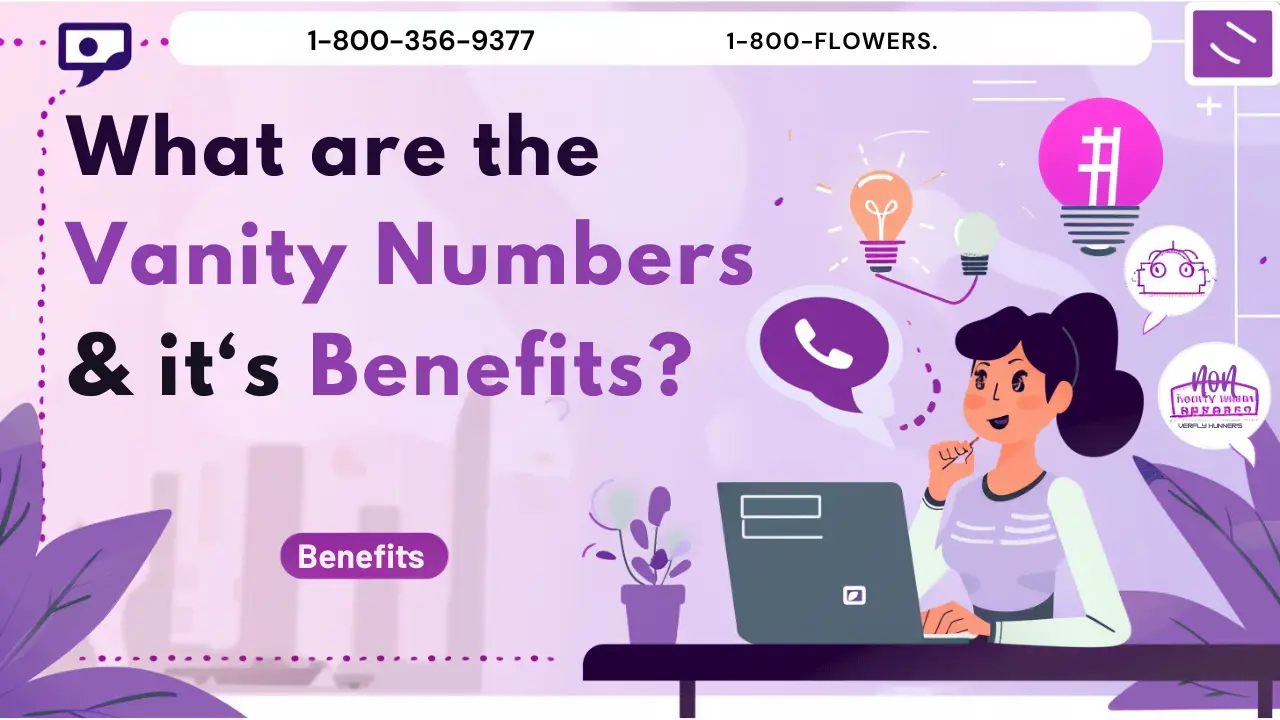
Where is Area Code 800 Calling From?
When you receive a call from a number with a distinctive prefix, it’s important to remember that these numbers are not tied to any specific geographic location. Calls to these numbers can originate from anywhere within the North American Numbering Plan (NANP) region, which includes the United States, Canada, and several Caribbean countries and territories. This geographic flexibility is possible because these numbers are virtual. When someone dials a number with a distinctive prefix, the call is routed through the telephone network to the actual destination number, which can be located anywhere within the NANP region, as determined by the owner of the number. So, whether you’re receiving a call from a business with one of these numbers or you’re using such a number for your own company, keep in mind that the caller or the recipient could be located anywhere within the expansive NANP region.Scam Prevention and 800 Toll-Free Numbers
While 800 numbers are a powerful tool for legitimate businesses, it’s essential to be aware that scammers can sometimes misuse them to portray a false sense of authority. Here’s how to protect yourself:- Understand the Tactic: Scammers often use toll-free numbers to appear like official organizations, such as banks, government agencies, or well-known companies. They may try to pressure you into providing personal information or even paying money.
- Don’t Trust Caller ID Blindly: Caller ID can be manipulated. Just because you see an 800 number or a seemingly familiar name pop up, it doesn’t guarantee the call is legitimate.
- Be Wary of Unsolicited Calls: If you receive a call out of the blue from someone claiming to be from a company you do business with, be cautious. Hang up and call the company back using their official, verified phone number.
- Trust Your Gut: If something feels off about a call, don’t hesitate to end it. Legitimate businesses won’t pressure you into giving out sensitive information on the spot.
Protect Yourself: Tips for Staying Safe
- Never Give Out Personal Details: Unless you’re certain who you’re speaking with, avoid providing sensitive information like Social Security numbers, credit card details, or online banking logins.
- Verify Through Official Channels: Instead of using any phone numbers or links provided during a suspicious call, contact the organization directly through their official website or a known trusted phone number.
- Report Fraudulent Activity: Report scam attempts to the Federal Trade Commission (FTC) or relevant authorities. This helps protect others from falling victim to similar scams.
Common Misconceptions About 800 Area Code Numbers
Despite their widespread use, toll-free numbers still face some misconceptions. These virtual numbers are not inherently associated with scams, and businesses of all sizes can access them. While companies bear the call costs, the benefits often outweigh the expenses.- Numbers with distinctive prefixes are not inherently associated with scams or fraudulent activities, although scammers may use them to mask their identity. Always verify the caller’s identity before providing personal information.
- These numbers are accessible to businesses of all sizes, not just large corporations, thanks to cloud-based phone systems and virtual communication solutions.
- While businesses bear the cost of incoming calls to their numbers with distinctive prefixes, the benefits often outweigh the expenses, and many providers offer flexible pricing plans.
- These numbers remain relevant in the digital age, as customers often prefer the immediacy and personal touch of phone-based customer service.
- Numbers with distinctive prefixes serve various business functions beyond customer service, including sales, marketing, and human resources.
Future of 800 Area Code Numbers
As technology evolves, toll-free numbers are likely to adapt and remain relevant through:- VoIP Integrations: The increasing adoption of Voice over Internet Protocol (VoIP) technology will enable seamless integration of 800 numbers with cloud-based solutions, offering cost savings, enhanced flexibility, and integration with other business tools.
- Advanced Analytics: 800 number systems may incorporate sophisticated analytics capabilities, such as real-time call monitoring, predictive routing, and integration with other data sources, to provide valuable insights into customer behaviour and preferences.
- Omnichannel Integration: 800 numbers may be integrated with other customer service platforms, such as websites, mobile apps, and chatbots, to provide seamless experiences across multiple communication channels.
Conclusion
800 area code numbers have proven to be a valuable asset for businesses looking to enhance their customer service, support, and overall communication strategies. As toll-free numbers, they allow customers to reach businesses without incurring any charges, providing a convenient and accessible channel for inquiries, sales, and support. Throughout this blog post, we’ve explored various aspects of 800 numbers, including their history, how they work, and their benefits for businesses of all sizes. We’ve seen how 800 numbers can help businesses project a professional image, improve customer satisfaction, and even contribute to increased sales and revenue. We’ve also addressed common misconceptions surrounding 800 numbers, clarifying that they are not inherently associated with scams, are accessible to businesses of all sizes, and remain relevant in the digital age. Furthermore, we’ve highlighted the versatility of 800 numbers, showcasing their potential applications beyond just customer service and support. Looking to the future, it’s clear that 800 numbers are poised to evolve and adapt alongside advancements in technology. From VoIP integrations and advanced analytics to omnichannel support, businesses can leverage these developments to further enhance the value and effectiveness of their 800 numbers. For businesses considering implementing toll-free calling, the key takeaways are clear: these virtual numbers can provide a powerful tool for improving customer communication, satisfaction, and loyalty. By understanding the benefits, addressing misconceptions, and staying informed about technological advancements, businesses can maximize the potential of their 800 numbers and use them to drive growth and success in the years to come. Ultimately, whether you’re a small startup or a large enterprise, implementing toll-free calling can be a valuable addition to your business’s communication strategy. By providing a convenient, cost-free, and memorable way for customers to reach you, these virtual numbers can help you build stronger relationships, improve your brand image, and position your business for long-term success.FAQs
Yes, you can make local calls to a toll-free number from anywhere within the North American Numbering Plan (NANP) region without incurring any long-distance charges.
A toll-free phone number allows callers to reach a business without being charged for the call. The cost is instead covered by the business receiving the call.
No, you can call a toll-free number from any landline or cell phone within the NANP region without needing a specific plan or incurring additional charges.
No, toll-free numbers are not tied to any specific geographic region. They are virtual numbers that can be routed to any destination within the NANP, regardless of the caller’s location.
Yes, your caller ID will typically display the toll-free number when you receive a call from a business using such a number.
Yes, you can obtain a toll-free number with a new prefix, such as 888, 877, 866, 855, or 844, if desired. These prefixes function the same way as the original 800 prefix.
Generally, there are no restrictions on making toll-free calls within the NANP region. However, some businesses may have specific hours of operation or call volume limitations.
Typically, toll-free numbers are used for inbound calls, allowing customers to reach a business without charges. Outbound calls are usually made using a standard local number or a dedicated outbound service.
To get a toll-free number for your business, contact a toll-free service provider or Responsible Organization (RespOrg). They can help you search for available numbers, reserve your preferred number, and set up the necessary routing and features.
Yes, toll-free numbers remain relevant in the digital age, as many customers still prefer the personal touch and immediacy of phone-based support, which toll-free calling provides.

